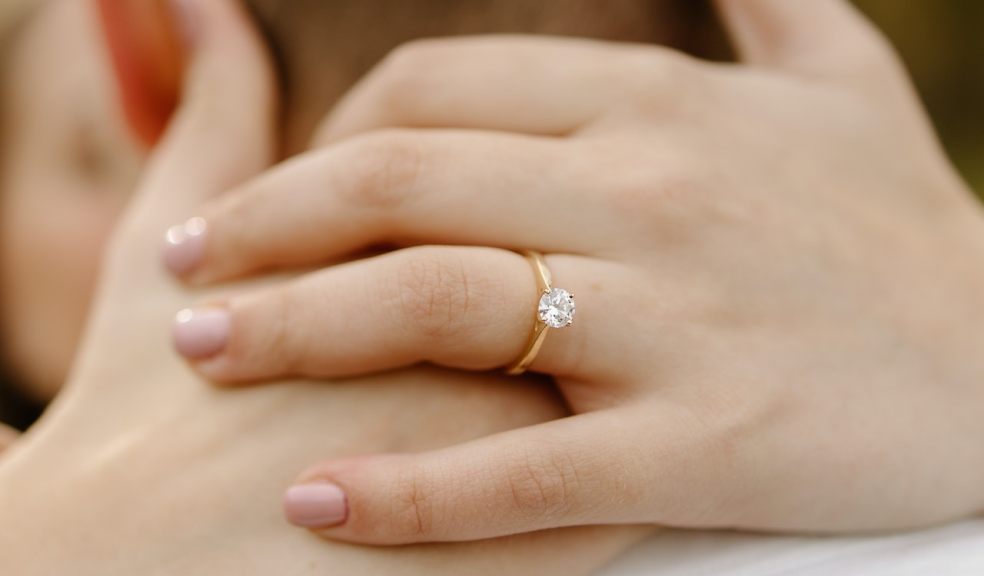
The different types of engagement ring settings and their features
Engagement rings are an iconic symbol of love and commitment, with their setting just as significant as the diamond or gemstone it holds. A ring's setting can enhance its beauty, protect it from damage, and even alter its perceived size and brilliance. In this article we'll take a closer look at different types of engagement ring settings and their features before you purchase one on https://yourasteria.com/collections/engagement-wedding-rings.
Prong Setting
The prong setting is the most common type of engagement ring setting, and for good reason. This classic design showcases diamonds or gemstones beautifully. A prong setting consists of small metal claws holding the stone securely while allowing maximum light to enter and refract through it, increasing its brilliance and sparkle. Prongs may be rounded or pointed, ranging in number from four to six or more; more prongs mean greater security for your stone but too many will detract from its beauty.
Bezel Setting
A bezel setting is a modern and sleek design that encircles the diamond or gemstone in a metal band. This type of setting is ideal for active individuals or those who work with their hands since it offers maximum protection for the stone. The metal band can be thin or thick, smooth or textured. A bezel setting may make a diamond appear larger as it frames it, giving off the illusion of larger surface area.
Channel Setting
A channel setting is a modern design that embeds smaller diamonds or gemstones into the band of an engagement ring. These stones are held securely by two parallel metal bars, creating a channel between them. Channel settings offer more subtlety as the diamonds or gemstones are flush with the band of the ring. Furthermore, channel settings may add sparkle to the ring due to close spacing of stones.
Pave Setting
A pave setting is a type of jewelry setting in which multiple small diamonds or gemstones are set closely together, creating the illusion of a "paved" effect. They're held in place with small metal prongs or beads and the band of the ring is covered in glittering gems. This style is ideal for those who appreciate sparkle and want maximum bling factor. A pave setting may even make a diamond appear larger by surrounding it with larger stones.
Tension Setting
A tension setting is a modern and unique design that holds diamond or gemstone in place with pressure from the band of the ring. The metal band bends slightly, creating tension which holds the stone securely. Perfect for those seeking an updated minimalist aesthetic, tension settings also give your diamond an illusion of larger size since no part of its surface area is blocked by metal.
Cluster Setting
Cluster setting refers to a type of setting in which multiple small diamonds or gemstones are set together in clusters, creating the illusion of larger stones. They're held in place with metal prongs or beads and can be arranged in various shapes and patterns. Cluster settings offer an artistic look and offer those seeking uniqueness an opportunity to showcase their stones more prominently. Moreover, this style may make the diamond appear larger by creating the illusion that it has more pieces present.
Finally, selecting the ideal engagement ring setting is just as essential as selecting a diamond or gemstone. Each type has its own advantages and drawbacks, so it's essential to take into account factors like personal style, lifestyle and budget when making your selection. Furthermore, quality of workmanship should also be taken into account; poorly made settings may compromise security and aesthetic of your stone.
When selecting a setting, it is essential to consult a trusted jeweler who can offer expert advice and guidance. A trusted jeweler will assist in selecting an option that complements both your diamond or gemstone and personal style and lifestyle. Furthermore, they can guide you through all available options while guaranteeing that the setting is of high quality and built to last.
When selecting an engagement ring setting, one important element to consider is the metal used in its band. Common metals used for engagement rings include gold, platinum and palladium; each metal offers distinct advantages and characteristics so you should select one based on your personal preferences and budget.
Gold is a popular choice for engagement ring settings due to its affordability and variety of colors - yellow, white and rose. Gold also has the softness that makes it easy to work with and allows intricate designs. Unfortunately, gold may not be as durable as other metals so more maintenance may be necessary over time.
Platinum is a high-grade metal renowned for its strength, durability and natural white color. Furthermore, platinum has hypoallergenic properties which make it ideal for those with sensitive skin. Unfortunately, platinum tends to be more costly than other metals and may need additional maintenance due to its tendency to scratch easily.
Palladium is a relatively recent metal that resembles platinum but costs less. Its lightweight and durability make it ideal for active individuals; however, due to its limited availability compared to other metals, palladium may be harder to come by than other alloys.
In addition to the metal used in a ring's band, it is essential to consider the quality of diamonds or gemstones set within. A diamond's beauty and value are determined by four Cs: carat weight, cut, clarity, and color. Each factor contributes to its value so make sure to select one that satisfies both your personal preferences and budget.
When selecting a diamond, it's essential to consider its certification. Certified diamonds have been evaluated and graded based on quality and characteristics by an independent laboratory; some reputable certification agencies include Gemological Institute of America (GIA) and American Gem Society (AGS).
Finally, selecting the ideal setting for an engagement ring is a decision that should be carefully thought through and considered. Each type of setting has its own advantages and drawbacks; make sure the one you select complements both your diamond or gemstone and personal style and lifestyle. By working with an established jeweler and taking into account factors like metal quality and certification, you can guarantee that your engagement ring is both beautiful and meaningful.

















